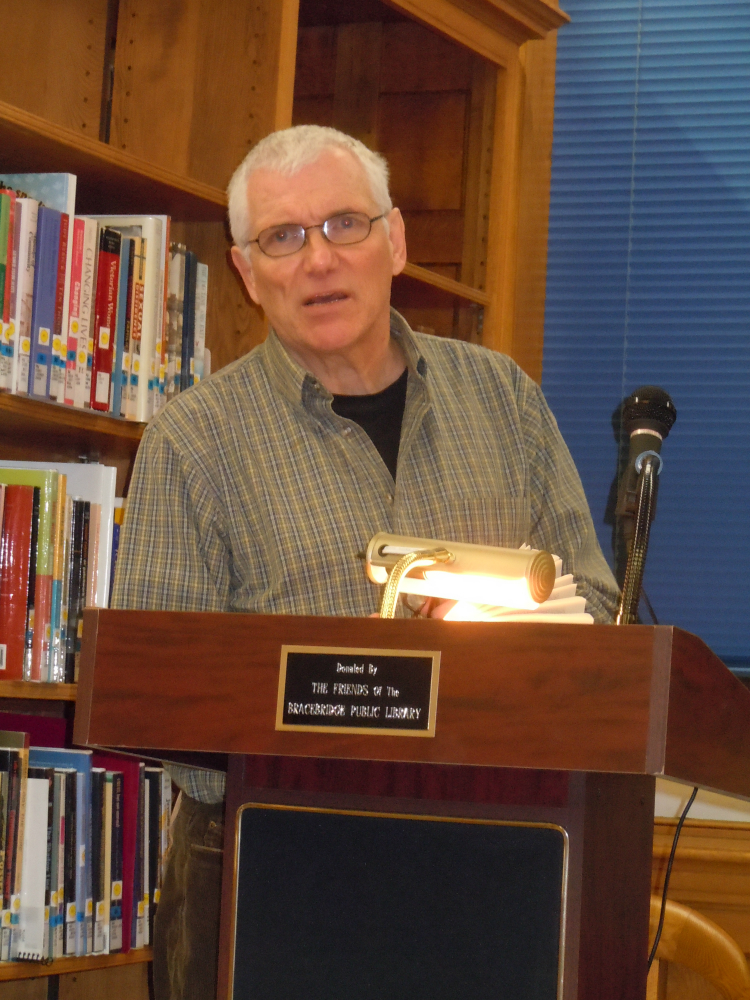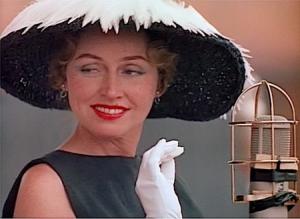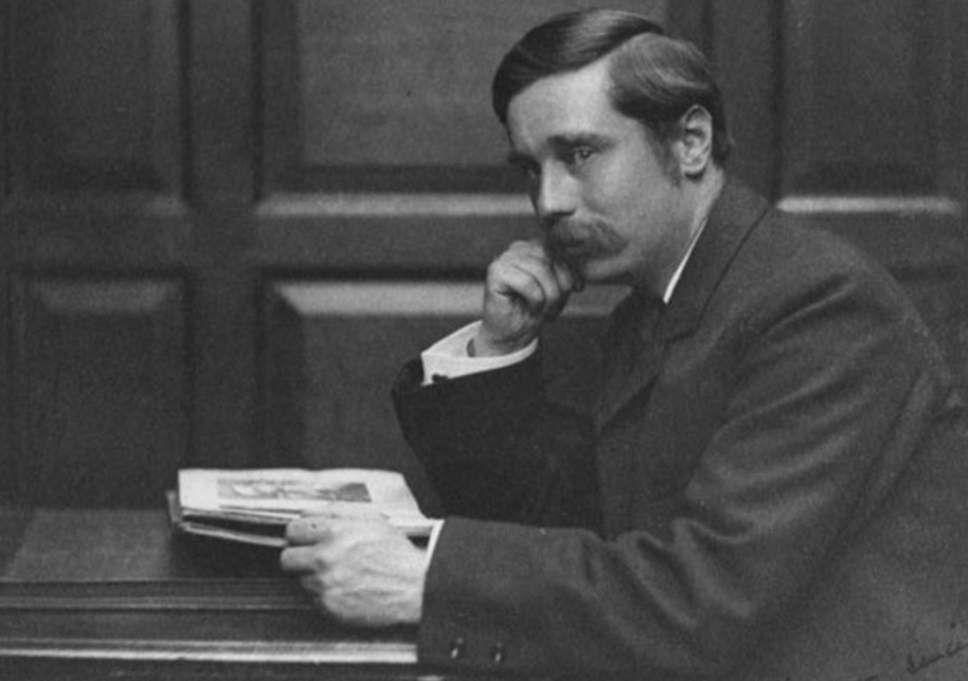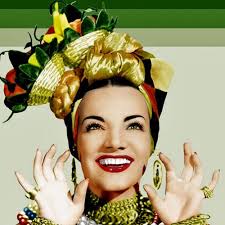
David Bruce Patterson HBA Sociology
University of Toronto 1976
Author: Square Wheels
Muskoka Author's Association: Membership Chairman
Friends of the Bracebridge Public Library: Membership
Baysville Writer's Circle; Asst. Director
Saturday Morning Writers

Bracebridge ON
This website is a dedicated to:
Wendy, Jeffrey, Sean and Logan Patterson
Gordon Newton and Cathi Tournour
Helen and Bruce Patterson
Rebecca Hulit and Kathy Mailloux
Catherine Thompson
Wendie Donabie
and the the artistic inspiration of:
Ann-Marie MacDonald
Chet Baker
Caleb Carr
Anita O'Day
Alex Pangman
Helen Patterson..."Mother"...hated being called Mom
Brianna Knappett
Quintette du Hot Club de France
The Humblebums
Thematic summary:
WORLD VIEW: George Carlin
SOMETHING TO PONDER: George Carlin George Carlin's wife died early in 2008 and George followed her, dying in July 2008. It is ironic George Carlin - comedian of the 70's and 80's - could write something so very eloquent and so very appropriate. An observation by George Carlin: The paradox of our time in history is that we have taller buildings but shorter tempers, wider Freeways, but narrower viewpoints. We spend more, but have less, we buy more, but enjoy less. We have bigger houses and smaller families, more conveniences, but less time. We have more degrees but less sense, more knowledge, but less judgment, more experts, yet more problems, more medicine, but less wellness. We drink too much, smoke too much, spend too recklessly, laugh too little, drive too fast, get too angry, stay up too late, get up too tired, read too little, watch TV too much, and pray too seldom. We have multiplied our possessions, but reduced our values. We talk too much, love too seldom, and hate too often. We've learned how to make a living, but not a life. We've added years to life not life to years. We've been all the way to the moon and back, but have trouble crossing the street to meet a new neighbor. We conquered outer space but not inner space. We've done larger things, but not better things. We've cleaned up the air, but polluted the soul. We've conquered the atom, but not our prejudice. We write more, but learn less. We plan more, but accomplish less. We've learned to rush, but not to wait. We build more computers to hold more information, to produce more copies than ever, but we communicate less and less. These are the times of fast foods and slow digestion, big men and small character, steep profits and shallow relationships. These are the days of two incomes but more divorce, fancier houses, but broken homes. These are days of quick trips, disposable diapers, throwaway morality, one night stands, overweight bodies, and pills that do everything from cheer, to quiet, to kill. It is a time when there is much in the showroom window and nothing in the stockroom. A time when technology can bring this letter to you, and a time when you can choose either to share this insight, or to just hit delete. Remember to spend some time with your loved ones, because they are not going to be around forever. Remember, say a kind word to someone who looks up to you in awe, because that little person soon will grow up and leave your side. Remember, to give a warm hug to the one next to you, because that is the only treasure you can give with your heart and it doesn't cost a cent. Remember, to say, 'I love you' to your partner and your loved ones, but most of all mean it. A kiss and an embrace will mend hurt when it comes from deep inside of you. Remember to hold hands and cherish the moment for someday that person will not be there again. Give time to love, give time to speak! And give time to share the precious thoughts in your mind. And always remember, life is not measured by the number of breaths we take, but by those moments that take our breath away. George Carlin
JAZZ:
http://en.wikipedia.org/wiki/Anita_O'Day
O'Day, along with Mel Tormé, is often grouped with the West Coast cool school of jazz. Like Tormé, O'Day had some training in jazz drums (courtesy of her first husband Don Carter); her longest musical collaboration was with jazz drummer John Poole. While maintaining a central core of hard swing, O'Day's skills in improvisation of rhythm and melody put her squarely among the pioneers of bebop.
She cited Martha Raye as the primary influence on her vocal style, also expressing admiration for Mildred Bailey, Ella Fitzgerald, and Billie Holiday. She always maintained that the accidental excision of her uvula during a childhood tonsillectomy left her incapable of vibrato, and unable to maintain longphrases. That botched operation, she claimed, forced her to develop a more percussive style based on short notes and rhythmic drive. However, when she was in good voice she could stretch long notes with strong crescendos and a telescoping vibrato, e.g. her live version of "Sweet Georgia Brown" at the 1958 Newport Jazz Festival, captured in Bert Stern's film Jazz on a Summer's Day
The call from Krupa came in early 1941. Of the 34 sides she recorded with Krupa, it was "Let Me Off Uptown", a novelty duet with Roy Eldridge, that became her first big hit. That same year, Down Beat named O'Day "New Star of the Year". In 1942, she appeared with the Krupa band in two "soundies" (short musical films originally made for jukeboxes), singing "Thanks for the Boogie Ride" and "Let Me Off Uptown". The same year Down Beat magazine readers voted her into the top five big band singers. O'Day came in fourth, with Helen O'Connell first, Helen Forrest second, Billie Holiday third, and Dinah Shore fifth. O'Day married golf pro and jazz fan Carl Hoff in 1942.
When Krupa's band broke up after he was arrested for possession of marijuana in 1943, O'Day joined Woody Herman for a month-long gig at the Hollywood Palladium, followed by two weeks at the Orpheum. Unwilling to tour with another big band, she left Herman after the Orpheum engagement and finished out the year as a solo artist. Despite her initial misgivings about the compatibility of their musical styles, she joined Stan Kenton's band in April 1944. During her 11 months with Kenton, O'Day recorded 21 sides, both transcription and commercial, and appeared in a Universal Pictures short Artistry in Rhythm (1944). "And Her Tears Flowed Like Wine" became a huge seller and put Kenton's band on the map. She also appeared in one soundie with Kenton, performing "I'm Going Mad for a Pad" and "Tabby the Cat". O'Day later said, "My time with Stanley helped nurture and cultivate my innate sense of chord structure." In 1945 she rejoined Krupa's band and stayed almost a year. The reunion yielded only 10 sides. After leaving Krupa late in 1946, O'Day once again became a solo artist.

Andrea Motis
From the age of seven, Motis developed musically at the Municipal School of Music of Sant Andreu, a neighborhood of Barcelona, becoming the school's lead trumpeter and later saxophonist. In 2007, at twelve years of age, she began to collaborate with the Sant Andreu Jazz Band, led by teacher and musician Joan Chamorro.[1]
In 2010, at the age of fifteen, she recorded an album of jazz standards, Joan Chamorro Presents Andrea Motis.[2] Her albums include Live at Jamboree and Feeling Good (2014).[3] She recorded Feeling Good with her mentor, Joan Chamorro, bassist and leader of the Sant Andreu Jazz Band.[4] She made her major label debut with Emotional Dance(Impulse!, 2017).
Andrea Motis UPDATE
https://youtube.com/watch?v=l0hROpWH_lI
Even though, Motis is only 22-years-old, she displays a mature musicality beyond her years. That’s because she began playing the trumpet at age seven; three years later she began studying jazz at the Municipal School of Music of Sant Andreu under Chamorro, who soon after recruited her for his band while she was still a teenager. While at the school, she was also a member of the Sant Andreu Jazz Band for nine years with which she recorded eight discs and played with such acclaimed musicians as trombonist Wycliffe Gordon, saxophonist Jesse Davis, clarinetist Bobby Gordon, and saxophonist Dick Oatts, among others. In addition to trumpet, Motis plays alto saxophone. But it was with Chamorro’s band that she began singing. “The trumpet will always be my first instrument,” Motis says when asked if she likes being a singer or an instrumentalist the most. “Playing the trumpet is like mediating; it’s such a part of my life. But I never want to choose just one side of my artistic sides because I love doing them all.”
On Emotional Dance, Motis’ singing mostly takes center stage. She possesses an alluring, supple alto. With its subtle vibrato and her succinct phrasing, Motis’ singing has drawn comparisons to such stylists as Billie Holiday and Norah Jones. Her vocal prowess reveals itself immediately on Charles Daniels and Richard Whiting’s classic, “He’s Funny That Way,” which opens the disc. Perhaps, it’s no coincidence that the jazz standard has long been associated with Lady Day; Motis and her ensemble certainly do the composition justice by underscoring it with a quintessential swing-era shuffle that paves the way for an absorbing solo from Robinson. Motis follows his lead by blowing a delightful trumpet solo that accentuates her citrus tone and her assured sense of melodic swing.
Motis sees Emotional Dance as an extension and evolution of her work with Chamorro. Like their previous efforts, the new album contains it fair share of jazz standards. In addition to “He’s Funny That Way,” Motis delivers captivating renditions of Franck Loesser’s “Never Will I Marry,” Cole Porter’s “You’d Be So Nice To Come Home To,” Eddie Jefferson’s “Baby Girl,” Johnny Mercer’s “I Remember You,” Horace Silver’s “Señor Blues,” and Antonio Carlos Jobim and Vinicius De Moraes’ “Chega de Saudade.”
Emotional Dance reveals some of Motis’ artistic growth with the presence of Frederico Sires Puig’s “La Gavina,” Els Amics de les Arts’ “Louisiana O Els Camps De Cotó,” and Perico Sambeat’s “Matlida.” On all three tunes Motis sings in Catalan – a first for her on disc. The latter tune even features Sambeat on a billowing soprano saxophone accompaniment and solo.
Also for the first time, Motis exhibits her gifts as composer. She penned three of Emotional Dance’s 13 songs. The first song she composed for the disc was “If You Give More Than You Can,” a poignant ballad containing heartfelt lyrics about being overwhelmed with multiple responsibilities. Her ebullient, “I Didn’t Tell Them Why” shows Motis’ friskier side as she sings about keeping a blossoming romance on the down low, while her swaggering hard-bop instrumental, “Save the Orangutan” best illustrates her command and improvisation heft on the trumpet as she shares the frontline with Frahm.

THE GREEN MOVEMENT:
Adherents to green politics tend to consider it to be part of a 'higher' worldview and not simply a political ideology. Green politics draws its ethical stance from a variety of sources, from the values of indigenous peoples, to the ethics of Gandhi, Spinoza and Uexküll. These people influenced green thought in their advocacy of long-term "seventh generation" foresight, and on the personal responsibility of every individual to make moral choices.
Of course, unease about adverse consequences of human actions on nature predates the modern concept of “environmentalism". Social commentators as far apart as ancient Rome and China complained of air, water and noise pollution.[4]
The philosophical roots of environmentalism can be traced back to enlightenment thinkers such as Rousseau in France and, later, the author and naturalist Thoreau in America. Organised environmentalism began in late 19th Century Europe and the United States as a reaction to the Industrial Revolution with its emphasis on unbridled economic expansion.[5]
“Green politics” first began as conservation and preservation movements, such as the Sierra Club, founded in San Francisco in 1892.
Left-green platforms of the form that make up the green parties today draw terminology from the science of ecology, and policy fromenvironmentalism, deep ecology, feminism, pacifism, anarchism, libertarian socialism, social democracy, eco-socialism, and social ecology. In the 1970s, as these movements grew in influence, green politics arose as a new philosophy which synthesized their goals. The Green Party political movement is not to be confused with the unrelated fact that in some far-right and fascist parties, nationalism has on occasion been tied into a sort of green politics which promotes environmentalism as a form of pride in the "motherland"[6][7]according a minority of authors.[8]
LITERATURE:
The Victorian novel
It was in the Victorian era (1837–1901) that the novel became the leading literary genre in English.[162] Women played an important part in this rising popularity both as authors and as readers.[163] Monthly serializing of fiction encouraged this surge in popularity, due to a combination of the rise of literacy, technological advances in printing, and improved economics of distribution.[164] Charles Dickens' Pickwick Papers, was published in twenty parts between April 1836 and November 1837.[165] Both Dickens and Thackeray frequently published this way.[166] However, the standard practice of publishing three volume editions continued until the end of the 19th century.[167] Circulating libraries, that allowed books to be borrowed for an annual subscription, were a further factor in the rising popularity of the novel.
The 1830s and 1840s saw the rise of social novel, that "arose out of the social and political upheavals which followed the Reform Act of 1832".[168] This was in many ways a reaction to rapid industrialization, and the social, political and economic issues associated with it, and was a means of commenting on abuses of government and industry and the suffering of the poor, who were not profiting from England's economic prosperity.[169] Stories of the working class poor were directed toward middle class to help create sympathy and promote change. An early example is Charles Dickens' Oliver Twist (1837–38). Other significant early example of this genre are Sybil, or The Two Nations, a novel by Benjamin Disraeli (1804–81) and Charles Kingsley's (1819–75)Alton Locke (1849).
Charles Dickens (1812–70) emerged on the literary scene in the late 1830s and soon became probably the most famous novelist in the history of English literature. One of his most popular works to this day is A Christmas Carol (1843). Dickens fiercely satirized various aspects of society, including the workhouse in Oliver Twist, the failures of the legal system in Bleak House, the dehumanizing effect of money in Dombey and Son and the influence of the philosophy of utilitarianism in factories, education etc., in Hard Times. However some critics have suggested that Dickens' sentimentality blunts the impact of his satire.[170] In more recent years Dickens has been most admired for his later novels, such as Dombey and Son (1846–48), Bleak House (1852–53) and Little Dorrit (1855–57), Great Expectations (1860–61), and Our Mutual Friend (1864–65).[171] An early rival to Dickens was William Makepeace Thackeray (1811–63), who during the Victorian period ranked second only to him, but he is now much less read and is known almost exclusively forVanity Fair (1847). In that novel he satirizes whole swaths of humanity while retaining a light touch. It features his most memorable character, the engagingly roguish Becky Sharp.
The Brontë sisters, Emily, Charlotte and Anne, were other significant novelists in the 1840s and 1850s. Their novels caused a sensation when they were first published but were subsequently accepted as classics. They had written compulsively from early childhood and were first published, at their own expense, in 1846 as poets under the pseudonyms Currer, Ellis and Acton Bell. The following year the three sisters each published a novel. Charlotte Brontë's (1816–55) work was Jane Eyre, which is written in an innovative style that combines naturalism with gothic melodrama, and broke new ground in being written from an intensely first-person female perspective.[172] Emily Brontë's (1818–48) novel was Wuthering Heights and, according to Juliet Gardiner, "the vivid sexual passion and power of its language and imagery impressed, bewildered and appalled reviewers,"[173] and led the Victorian public and many early reviewers to think that it had been written by a man.[174] Even though it received mixed reviews when it first came out, and was often condemned for its portrayal of amoral passion, the book subsequently became an English literary classic.[175] The third Brontë novel of 1847 was Anne Brontë's (1820–49) Agnes Grey, which deals with the lonely life of a governess. Anne Brontë's second novel, The Tenant of Wildfell Hall (1848), is perhaps the most shocking of the Brontës' novels. In seeking to present the truth in literature, Anne's depiction of alcoholism and debauchery was profoundly disturbing to 19th-century sensibilities.[176] Charlotte Brontë'sShirley was published in 1849, Villette in 1853, and The Professor in 1857.
Elizabeth Gaskell (1810–65) was also a successful writer and her first novel, Mary Barton, was published anonymously in 1848. Gaskell's North and South contrasts the lifestyle in the industrial north of England with the wealthier south. Even though her writing conforms to Victorian conventions, Gaskell usually frames her stories as critiques of contemporary attitudes, and her early works focused on factory work in the Midlands. She always emphasised the role of women, with complex narratives and dynamic female characters.[177]
Anthony Trollope's (1815–82) was one of the most successful, prolific and respected English novelists of the Victorian era. Some of his best-loved works are set in the imaginary west country county of Barsetshire, including The Warden (1855) and Barchester Towers(1857). Trollope's novels portray the lives of the landowning and professional classes of early Victorian England. Henry Jamessuggested that Trollope's greatest achievement was "great apprehension of the real", and that "what made him so interesting, came through his desire to satisfy us on this point".[178]
George Eliot's (Mary Ann Evans (1819–80) first novel Adam Bede was published in 1859, and she was a major novelist of the mid-Victorian period. Her works, especially Middlemarch (1871–72), are important examples of literary realism, and are admired for their combination of high Victorian literary detail, with an intellectual breadth that removes them from the narrow geographic confines they often depict, that has led to comparisons with Tolstoy.[179] While her reputation declined somewhat after her death,[180] in the 20th century she was championed by a new breed of critics, most notably by Virginia Woolf, who called Middlemarch "one of the few English novels written for grown-up people".[181] Various film and television adaptations of Eliot's books have also introduced her to a wider readership.[182]
George Meredith (1828-1909) is best remembered for his novels The Ordeal of Richard Fevered (1859) and The Egotist (1879). "His reputation stood very high well into" the 20th-century but then seriously declined.[183]
An interest in rural matters and the changing social and economic situation of the countryside is seen in the novels of Thomas Hardy (1840–1928). A Victorian realist, in the tradition of George Eliot, he was also influenced both in his novels and poetry byRomanticism, especially by William Wordsworth.[184] Charles Darwin is another important influence on Thomas Hardy.[185] Like Charles Dickens he was also highly critical of much in Victorian society, though Hardy focussed more on a declining rural society. While Hardy wrote poetry throughout his life, and regarded himself primarily as a poet, his first collection was not published until 1898, so that initially he gained fame as the author of such novels as, Far from the Madding Crowd (1874), The Mayor of Casterbridge (1886), Tess of the d'Urbervilles (1891), and Jude the Obscure (1895). He ceased writing novels following adverse criticism of this last novel. In novels such as The Mayor of Casterbridge and Tess of the d'Urbervilles Hardy attempts to create modern works in the genre of tragedy, that are modelled on the Greek drama, especially Aeschylus and Sophocles, though in prose, not poetry, fiction, not a play, and with characters of low social standing, not nobility.[186] Another significant late-19th-century novelist is George Robert Gissing (1857–1903), who published 23 novels between 1880 and 1903. His best known novel is New Grub Street (1891). Important developments occurred in genre fiction in this era.
Although pre-dated by John Ruskin's The King of the Golden River in 1841, the history of the modern fantasy genre is generally said to begin with George MacDonald, the influential author of The Princess and the Goblin and Phantastes (1858). William Morris was a popular English poet who also wrote several fantasy novels during the latter part of the 19th century. Wilkie Collins' epistolary novel The Moonstone (1868), is generally considered the first detective novel in the English language, while The Woman in White is regarded as one of the finest sensation novels. H. G. Wells's (1866–1946) writing career began in the 1890s with science fiction novels like The Time Machine (1895), and The War of the Worlds (1898) which describes an invasion of late Victorian England by Martians, and Wells is seen, along with Frenchman Jules Verne (1828–1905), as a major figure in the development of the science fiction genre. He also wrote realistic fiction about the lower middle class in novels like Kipps (1905) and The History of Mr Polly (1910).
HOLLYWOOD:
During the Golden Age of Hollywood, which lasted from the end of the silent era in American cinema in the late 1920s to the early 1960s, thousands of movies were issued from the Hollywood studios. The start of the Golden Age was arguably when The Jazz Singer was released in 1927, ending the silent era and increasing box-office profits for films as sound was introduced to feature films.
Most Hollywood pictures adhered closely to a formula – Western, slapstick comedy, musical,animated cartoon, biographical film (biographical picture) – and the same creative teams often worked on films made by the same studio. For example, Cedric Gibbons and Herbert Stothartalways worked on MGM films, Alfred Newmanworked at 20th Century Fox for twenty years, Cecil B. De Mille's films were almost all made atParamount, and director Henry King's films were mostly made for 20th Century Fox.
At the same time, one could usually guess which studio made which film, largely because of the actors who appeared in it; MGM, for example, claimed it had contracted "more stars than there are in heaven." Each studio had its own style and characteristic touches which made it possible to know this – a trait that does not exist today.
For example, To Have and Have Not(1944) is famous not only for the first pairing of actors Humphrey Bogart (1899–1957) and Lauren Bacall (1924–) but also for being written by two future winners of the Nobel Prize in Literature: Ernest Hemingway (1899–1961), the author of the novel on which the script was nominally based, andWilliam Faulkner (1897–1962), who worked on the screen adaptation.
After The Jazz Singer was released in 1927, Warner Bros. gained huge success and were able to acquire their own string of movie theaters, after purchasing Stanley Theaters and First National Productions in 1928. MGM had also owned the Loews string of theaters since forming in 1924, and the Fox Film Corporation owned the Fox Theatre strings as well. Also, RKO (a 1928 merger betweenKeith-Orpheum Theaters and the Radio Corporation of America[12]) responded to the Western Electric/ERPI monopoly over sound in films, and developed their own method, known as Photophone, to put sound in films.[10]
Paramount, which already acquired Balaban and Katz in 1926, would answer to the success of Warner Bros. and RKO, and buy a number of theaters in the late 1920s as well, and would hold a monopoly on theaters in Detroit, Michigan.[13] By the 1930s, almost all of the first-run metropolitan theaters in the United States were owned by the Big Five studios – MGM, Paramount Pictures, RKO, Warner Bros., and 20th Century Fox.[14]
The studio system[edit]
Movie-making was still a business however, and motion picture companies made money by operating under the studio system. The major studios kept thousands of people on salary — actors, producers, directors, writers, stunt men, craftspersons, and technicians. They owned or leased Movie Ranches in rural Southern California for location shooting of westerns and other large scale genre films. And they owned hundreds of theaters in cities and towns across the nation, theaters that showed their films and that were always in need of fresh material.
In 1930, MPDAA President Will Hays created the Hays (Production) Code, which followed censorship guidelines and went into effect after government threats of censorship expanded by 1930.[15] However, the code was never enforced until 1934, after the Catholic watchdog organization The Legion of Decency – appalled by some of the provocative films and lurid advertising of the era later classified Pre-Code Hollywood- threatened a boycott of motion pictures if it didn't go into effect.[16] Those films that didn't obtain a seal of approval from the Production Code Administration had to pay a $25,000 fine and could not profit in the theaters, as the MPDAA owned every theater in the country through the Big Five studios.
Throughout the 1930s, as well as most of the golden age, MGM dominated the film screen and had the top stars in Hollywood, and was also credited for creating the Hollywood star system altogether.[17] Some MGM stars included "King of Hollywood" Clark Gable,Lionel Barrymore, Jean Harlow, Norma Shearer, Greta Garbo, Joan Crawford, Jeanette MacDonald and husband Gene Raymond,Spencer Tracy, Judy Garland, and Gene Kelly.[17] But MGM did not stand alone. Another great achievement of US cinema during this era came through Walt Disney's animation company. In 1937, Disney created the most successful film of its time, Snow White and the Seven Dwarfs.[18] This distinction was promptly topped in 1939 when Selznick International created what is still, when adjusted for inflation, the most successful film of all time, Gone with the Wind.[19]
Many film historians have remarked upon the many great works of cinema that emerged from this period of highly regimented film-making. One reason this was possible is that, with so many movies being made, not every one had to be a big hit. A studio could gamble on a medium-budget feature with a good script and relatively unknown actors: Citizen Kane, directed by Orson Welles (1915–1985) and often regarded as the greatest film of all time, fits that description. In other cases, strong-willed directors like Howard Hawks(1896–1977), Alfred Hitchcock (1899–1980) and Frank Capra (1897–1991) battled the studios in order to achieve their artistic visions.
The apogee of the studio system may have been the year 1939, which saw the release of such classics as The Wizard of Oz, Gone with the Wind, Stagecoach, Mr. Smith Goes to Washington, Wuthering Heights, Only Angels Have Wings, Ninotchka and Midnight. Among the other films from the Golden Age period that are now considered to be classics: Casablanca, It's a Wonderful Life, It Happened One Night, the original King Kong, Mutiny on the Bounty, Top Hat, City Lights, Red River, The Lady from Shanghai, Rear Window, On the Waterfront, Rebel Without a Cause, Some Like It Hot and The Manchurian Candidate.





